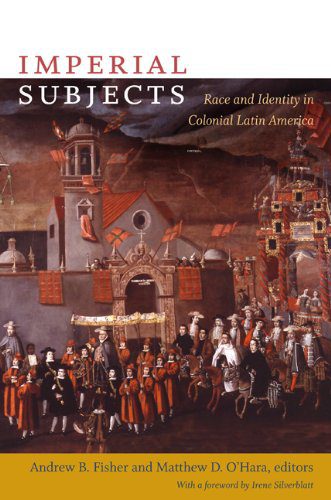Bound Lives chronicles the lived experience of race relations in northern coastal Peru during the colonial era. Rachel Sarah O’Toole examines the construction of a casta (caste) system under the Spanish government, and how this system was negotiated and employed by Andeans and Africans.
Royal and viceregal authorities defined legal identities of “Indian” and “Black” to separate the two groups and commit each to specific trades and labor. Although they were legally divided, Andeans and Africans freely interacted and depended on each other in their daily lives. Thus, the caste system was defined at both the top and bottom of society. Within each caste, there were myriad subcategories that also determined one’s standing.
Reacting to the rising numbers of mixed-blood (Spanish-Indian-Black African) people in its New Spain colony, the eighteenth-century Bourbon government of Spain attempted to categorize and control its colonial subjects through increasing social regulation of their bodies and the spaces they inhabited. The discourse ofcalidad(status) andraza(lineage) on which the regulations were based also found expression in the visual culture of New Spain, particularly in the unique genre ofcastapaintings, which purported to portray discrete categories of mixed-blood plebeians.
 Imperial Subjects: Race and Identity in Colonial Latin America by Andrew Fisher (Editor); Matthew D. O'Hara (Editor)
Imperial Subjects: Race and Identity in Colonial Latin America by Andrew Fisher (Editor); Matthew D. O'Hara (Editor)